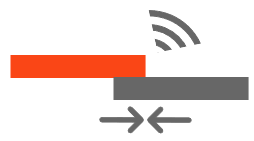Squeak and Rattle Director
Create and evaluate evaluation lines and optimize interfaces to eliminate squeak and rattle issues.
AltairSqueak and Rattle Director (SnRD) can be used to rapidly identify and eliminate squeak and rattle risks in products at an early design stage. This is achieved by utilizing a novel set of tools and methods included in a stream-lined, semi-automated process which is fully integrated in HyperMesh.
SnRD simplifies otherwise complex and time-consuming tasks, making it easy to analyze risks, identify root-causes, find a solution through numerical optimization, and explore effects caused by climate and manufacturing variability.
| Rattle | Squeak |
|---|---|
 |
 |
| Rattles are caused when there is a relative motion between components that come in contact for a short duration of time, due to impact forces. Rattling generally occurs when the components are loose or have overly flexible elements. | Squeaks occur when two surfaces interact under stick-slip phenomenon. Friction is caused by a relative motion between the surfaces. The frictional energy is stored in the contact surfaces and is released when it exceeds the kinetic friction; which in turn produces an audible squeak. |
The phenomena of squeak and rattle may occur even in a newly manufactured products, and will increase in time, causing discomfort and deterioration of product quality.
Both testing and simulation techniques could be used in various industries, aimed to eliminate the occurrence of squeak and rattle. For example, in the automotive industry squeak and rattle problems are solved to reduce the noise, vibrations, harshness, and to control cabin noise. This enhances both the ride quality and comfort.
To develop innovative, reliable, and efficient products, you need to be aware of how a design will perform under real world conditions, and have the ability to obtain these insights as quickly as possible. Manufacturers no longer have the luxury of performing lengthy physical tests to understand how a design will behave.